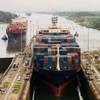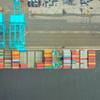American NW Ports Set Marine Emissions Goals
The ports of Seattle, Tacoma and Metro Vancouver, Canada, aim to cut diesel emissions by 75 percent per ton of cargo moved by 2015 and 80 percent by 2020, from a 2005 baseline. Factoring in projected cargo growth, this will result in overall reductions of 70 percent by 2015 and 75 percent by 2020.
The ports also set a goal to reduce greenhouse gases by 10 percent by 2015 and 15 percent by 2020 per ton of cargo moved.
The goals are part of the 2013 Northwest Ports Clean Air Strategy Update, which was adopted this week. This update to the 2007 Northwest Ports Clean Air Strategy is a ground-breaking five-year-old partnership among the three ports and five regulatory agencies, along with cooperative relationships with customers, tenants, shipping lines and environmental organizations. The 2013 Update commits these groups to work together through 2020.
The 2013 update was based on the results of the 2011 Puget Sound Maritime Air Emissions Inventory. The inventory found maritime-related air pollution has decreased since 2005, with much of the progress due to significant, voluntary investments of the maritime industry and government agencies in cleaner technology, cleaner fuels and more efficient systems of operation.
To develop and implement the 2007 strategy and this 2013 strategy update, the three ports partnered with other government agencies in the Puget Sound: the U.S. Environmental Protection Agency, Washington State Department of Ecology and Puget Sound Clean Air Agency.














